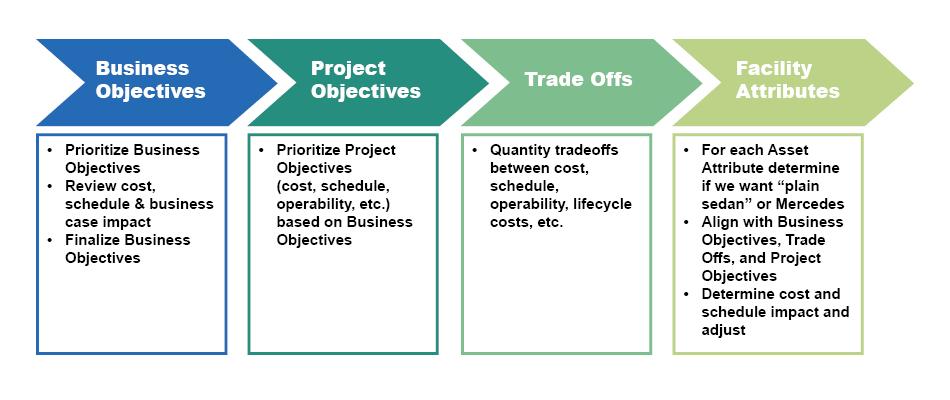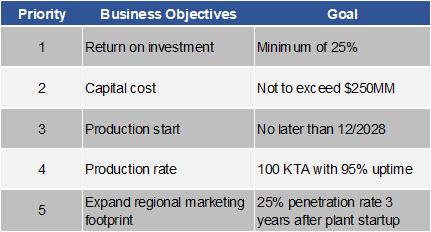Interface Consulting can assist organizations with a smart start on their capital projects, resulting in faster project delivery at a reduced capex.
Capital project stakeholders use the project framing process to ensure that the project gets a smart start and that it is planned and executed with the right goals in mind. Failure to do so often results in false starts and wasted effort. It is critical that projects achieve alignment on business objectives as well as project objectives among all stakeholders: engineering; business owner; operations; health, safety, and environment (HSE); maintenance; commercial; and others.
Without clear business and project objectives, a project’s probability of success may suffer. For large projects there are dozens of key stakeholders within an organization, who will make hundreds – if not thousands – of decisions throughout the project lifecycle. Lack of alignment is almost certain to lead to confusion and lack of focus.
What Is Project Framing?
Interface Consulting’s project framing process employs a structured approach to help stakeholders align on the objectives and attributes of the project, and addresses critical issues such as the following:
- Business objectives, such as market entry timing, rate of return, future cost avoidance, HSE issues, production volumes, etc.
- Which of these items has the highest priority?
- Project objectives, such as cost, schedule, safety, project changes, quality issues, customer satisfaction, etc.
- Will cost or schedule drive the project?
- Cost, schedule, and uptime tradeoff
- At times, not all these constraints can be met. Stakeholders should align on the priority of tradeoffs prior to project initiation, as this drives the decision-making process.
- What type of facility will the firm build?
- Is the facility a standard construction or highly sophisticated and unique?
- Stakeholders align on a facility attribute matrix listing the following: life of the project, turndown capacity, capacity robustness, sparing philosophy, control philosophy, ability to handle different feedstocks, incremental investment criteria, facility uptime, ability to meet product specifications, maintenance support equipment, etc.
This is illustrated in the graphic below.

Interface Consulting’s approach to objectives is that they should be verifiable and definitive. This ensures that all stakeholders are accountable for the project outcome based on key metrics. Provided below is an example of business objectives that an owner could desire.

Interface Consulting’s Project Framing Methodology
Interface Consulting’s project framing is performed in concert with our client stakeholders. Through interviewing key personnel and reviewing project documents, we ensure that we understand the project and business drivers as well as the needs and goals of all key stakeholders. Based on these interviews, we develop an initial view of the project framing deliverables. In a workshop environment, our expert consultants then help the client’s key stakeholders align on business objectives, project objectives, trade-offs, and facility attributes.
Expert Analysis and Support
Each project is unique and faces its own set of challenges and risks. Interface Consulting leverages its deep industry experience and the expertise of its consultants to assist clients with skillful, thorough, and upfront alignment on objectives to get projects off to a smart start with a minimum of project recycle.

